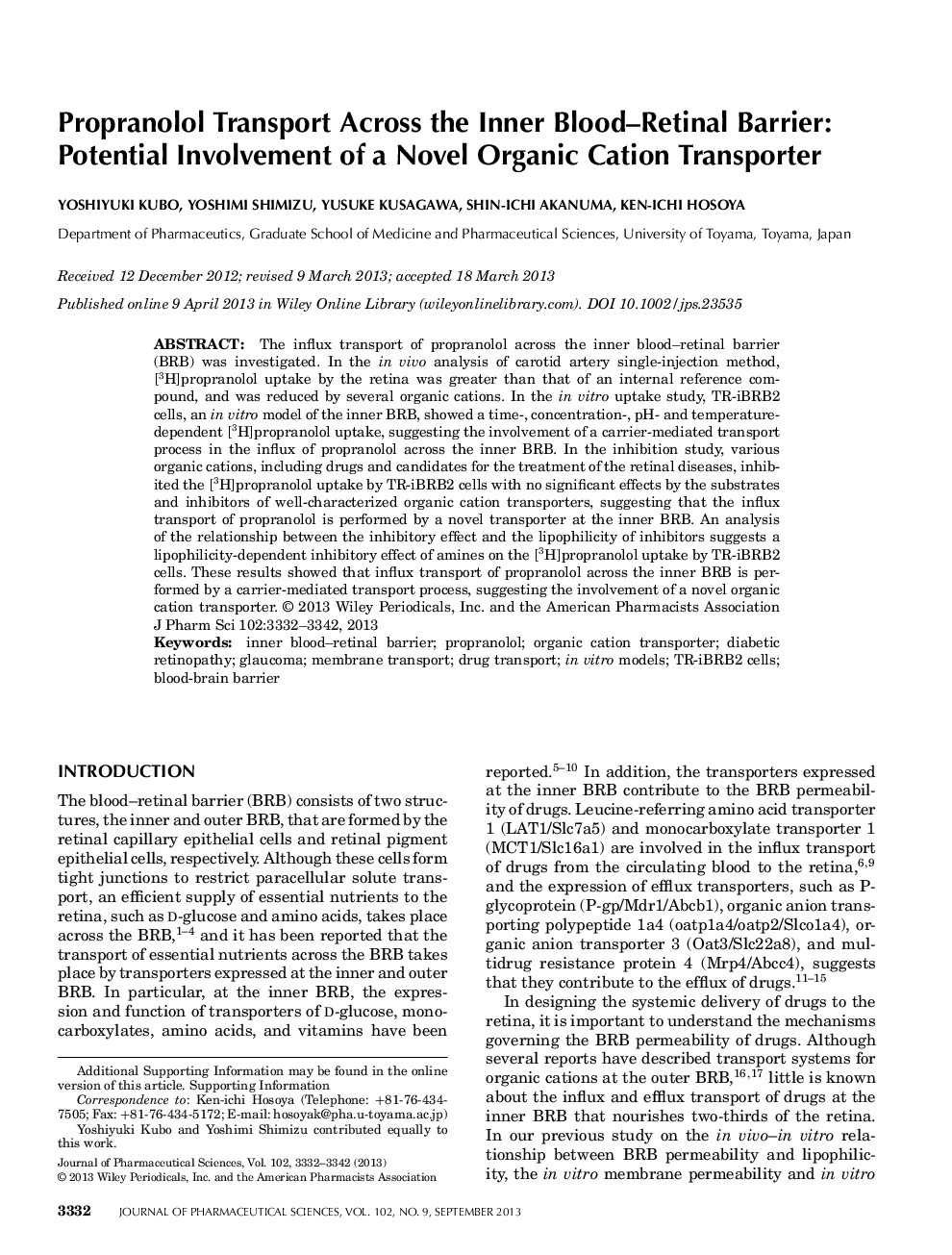| Article ID | Journal | Published Year | Pages | File Type |
|---|---|---|---|---|
| 2484846 | Journal of Pharmaceutical Sciences | 2013 | 11 Pages |
ABSTRACTThe influx transport of propranolol across the inner blood–retinal barrier (BRB) was investigated. In the in vivo analysis of carotid artery single-injection method, [3H]propranolol uptake by the retina was greater than that of an internal reference compound, and was reduced by several organic cations. In the in vitro uptake study, TR-iBRB2 cells, an in vitro model of the inner BRB, showed a time-, concentration-, pH- and temperature-dependent [3H]propranolol uptake, suggesting the involvement of a carrier-mediated transport process in the influx of propranolol across the inner BRB. In the inhibition study, various organic cations, including drugs and candidates for the treatment of the retinal diseases, inhibited the [3H]propranolol uptake by TR-iBRB2 cells with no significant effects by the substrates and inhibitors of well-characterized organic cation transporters, suggesting that the influx transport of propranolol is performed by a novel transporter at the inner BRB. An analysis of the relationship between the inhibitory effect and the lipophilicity of inhibitors suggests a lipophilicity-dependent inhibitory effect of amines on the [3H]propranolol uptake by TR-iBRB2 cells. These results showed that influx transport of propranolol across the inner BRB is performed by a carrier-mediated transport process, suggesting the involvement of a novel organic cation transporter.
